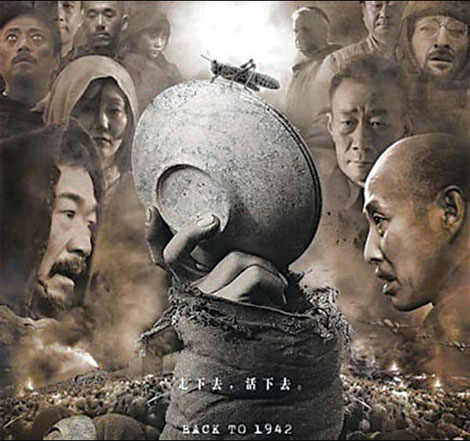

 |
|
Back to 1942, Liu's latest project with celebrated director Feng Xiaogang, grossed $32 million within the first week. |
Liu recently published a book that includes the original novella and the film's script.
"The book shows how something seemingly un-filmable became a film," the author says.
Liu's novella is more like an investigative report than a story. There's no protagonist or central plotline. The work instead comprises sketches of six different groups of people during the War of Resistance against Japanese Aggression (1937-45).
Related: A true picture of turning Liu's fantastic fiction into Feng's film
Millions of famine refugees trekked from Henan to Shaanxi in 1942, as the Kuomintang government allied with the United States to fight the Japanese.
Time magazine reporter Theodore Harold White witnessed and documented the refugees' plight, while foreign missionaries preached to the starving.
It's virtually unheard of to base a film on six groups of people who barely interact.
Liu recalls few of the experts he and Feng visited in 2002 believed it was possible to adapt the book to film.
Liu later squatted beneath a tree and told Feng: "People are used to doing easy things. But difficult endeavors require much more."
Liu insisted all six groups appear in the film because - beyond such surface causes as locusts and drought - people were the tragedy's source.
"Politicians, the national army and the Japanese invaders all manipulated the natural disaster for their own interests, despite the sufferings of millions of ordinary people," he says.
As "dumb people, who don't take shortcuts", the two started a three-month journey through Henan, Shaanxi, Chongqing and Cairo - the places their characters trek.
They were inspired by what they felt and observed.
The duo felt too tired to keep talking, despite having full stomachs and no luggage.
"Think about the refugees, who practically carried their homes on their backs in extreme hunger. They wouldn't talk much," Liu says.
"So the film's dialogues are very short."